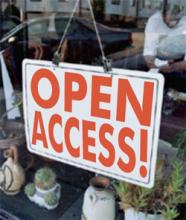Connectivity Cornucopia: We Give Thanks!
This time of year, people come together to celebrate the things they are thankful for and appreciate. Here at the Institute for Local Self-Reliance, we want to take a moment to appreciate all the communities, people, and wonderful ideas that help spread the concept of fast, affordable, reliable connectivity.
A few of us looked into the cornucopia that is feeding the growth of publicly owned Internet networks and picked out some of our favorites. There are more people, places, and ideas than we could write about in one post. Nevertheless, it's always good to step back and consider how the many contributions to the Connectivity Cornucopia accelerate us toward high-quality Internet access for all.
People: Colorado Local Voters
We appreciate the voters in Colorado who chose to reclaim local authority. This year, 26 more counties and municipalities asked voters to opt out of restrictive SB 152, and all chose to take back telecommunications authority. They joined the ranks of a groundswell of local Colorado citizens who have voiced their opinion to Denver - 95 communities in all. They know that they are the best situated to make decisions about local connectivity and, even if they don’t have solid plans in place, want the ability to investigate the options. Colorado voters rock!
Place: Ammon, Idaho







